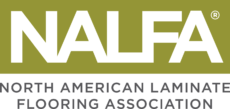Let’s take a closer look at an often-misunderstood topic that’s so important in multi-unit construction:
- Sound Testing Requires the Full Assembly Correct sound testing methods take into account the entire floor/ceiling assembly. That means from the surface of the floor covering material in the upper unit to the ceiling in the lower unit, and everything in-between. These are not single component tests.
- The Difference is in the Details An integral part of any sound test report is a detailed description of the floor/ceiling assembly used. Without it, results are basically meaningless. And using sound testing results to represent underlayment abilities, without the larger picture, is confusing and misleading to the consumer.
- Testing Can Be Done in a Lab The International Building Code (IBC) recognizes two types of laboratory tests for measuring sound. The IIC test measures impact insulation and STC measures airborne sound transmission. Both are conducted in a controlled setting with multiple readings taken. The readings are plugged into a formula to create a higher number – the higher the better. A sound level of 50 and above is required.
- Field Tests are Also Recognized The IBC also recognizes two non-lab tests, which are the field counterparts of the lab tests. The FIIC and FSTC are each conducted using the same methods but within the actual structure being built. A score of 45 or higher is advised in these types of field tests.
- Use the Delta Test for Direct Underlayment Evaluation For an “apples to apples” test of underlayment, use the ASTM E-2179 test. It isolates the acoustical performance of a single material within the full ceiling assembly. The method consists of two IIC tests over the same concrete sub-floor. One test is over the bare sub-floor (no flooring materials) and the other is over the same floor with floor covering material and underlayment included.
For more information, download a copy of the NALFA white paper on sound testing: NALFA White Paper on Sound Testing (PDF)


